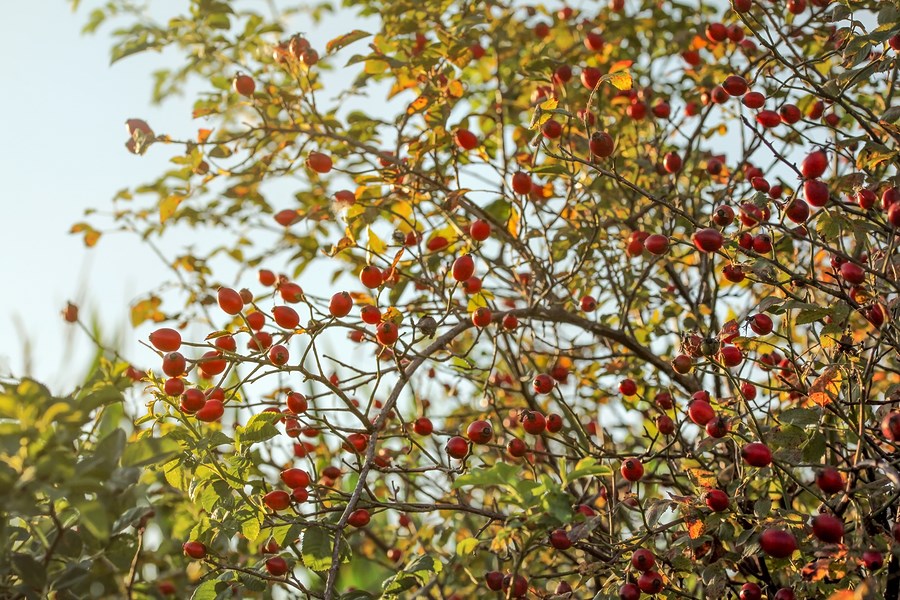Small fruit shrubs are primarily cherries and a wide variety of berries. Many are also ornamental, providing a show of lovely spring blooms. Growing a variety of these shrubs can provide you with fruit from the end of June into September. Some lesser-known and lesser-used berries will also be covered in these articles. There is a small fruit shrub for almost any size of garden and any location.
Many Nanking cherries are grown for their lovely spring flowers, and the fruit is left for the birds. This is a lovely edible little bright red sweet cherry, actually more closely related to plums than cherries. The red-fruited variety is self-fertile, although cross-pollination with another Nanking cherry increases fruit production. The black-fruited Nanking cherry needs a red-fruited partner for cross-pollination and fruit production. The fruit ripens in summer. This five-to-six-foot-tall and wide shrub does well in a sunny location and can handle dry conditions. It is adaptable to a variety of soils, and generally pest-free.
Dwarf sour cherries, developed at the University of Saskatchewan, have a number of named cultivars. Growing from five to seven feet tall, the shrub and fruit of each cultivar differs slightly in size and ripening time, as well as suckering habit. A harsh winter can cause some dieback, so it is suggested to plant them more like a hedge, allowing suckers to fill the gaps and pruning out old, dead and diseased stems. This is the traditional pie cherry, great for canning, but also delicious eaten fresh, if you can get them before the birds do. The fruit ripens in mid- to late summer, with shrubs starting to produce within two to three years after planting. Providing a wind break on the north and west side of the garden can limit winter damage. Grow in full sun (minimum of six hours of sunlight) in well-drained, normal garden soil. The only pest I have encountered on my sour cherries is aphids, easily controlled. The shrubs in bloom are also ornamental.
Another fruiting shrub developed at the University of Saskatchewan is the haskap, or honeyberry. The very early yellow flowers are not particularly showy, but this four-to-eight-foot shrub produces delicious fruit ready to harvest by the end of June. There are several named cultivars, each producing blue-black berries that vary slightly in size, shape and flavour. More than one variety is required for cross-pollination. These shrubs are fully hardy, very productive, tolerant of partial shade, and disease and pest resistant. They prefer a rich, moist, well-drained soil. The fruit makes lovely jam, and the fresh berries are tasty.
The next article will cover more small fruit for our gardens.




